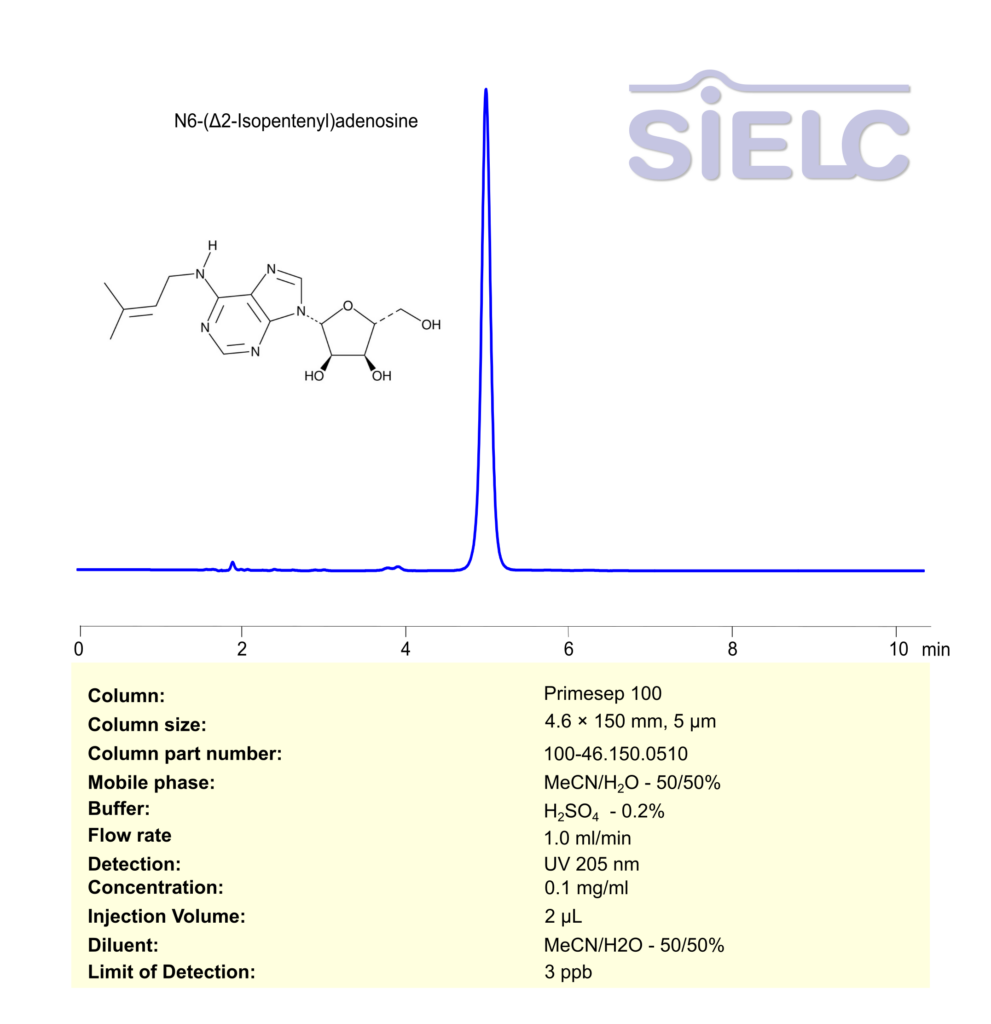High Performance Liquid Chromatography (HPLC) MS Method for Analysis of N6-(Δ2-Isopentenyl)adenine on Primesep 100 by SIELC Technologies
Separation type: Liquid Chromatography Mixed-mode SIELC Technologies

High Performance Liquid Chromatography (HPLC) Method for Analysis of N6-(Δ2-Isopentenyl)adenine
N6-(Δ²-Isopentenyl)adenine (iP) is a cytokinin, a plant hormone that regulates cell division and growth. Like trans-Zeatin, it is part of the adenine-derived cytokinin family and plays a significant role in promoting plant development and differentiation.
This compound is particularly important in both natural plant physiology and agricultural biotechnology, where it is applied to stimulate growth or improve crop yields.
N6-(Δ2-Isopentenyl)adenine can be retained, separated and analyzed using a Primesep 100 mixed-mode stationary phase column. The analysis employs an isocratic method with a simple mobile phase comprising water, acetonitrile (MeCN), and sulfuric acid as a buffer. This method allows for detection using UV 210 nm.
You can find detailed UV spectra of N6-(Δ2-Isopentenyl)adenine and information about its various lambda maxima by visiting the following link.
| Column | Primesep 100, 4.6 x 150 mm, 5 µm, 100 A, dual ended |
| Mobile Phase | MeCN – 50% |
| Buffer | H2SO4 -0.2% |
| Flow Rate | 1.0 ml/min |
| Detection | UV 205 nm |
| Sample | 0.1 mg/ml |
| Diluent | MeCN/H2O- 50/50% |
| LOD* | 3 ppb |
| Class of Compounds | Phytohormone |
| Analyzing Compounds | N6-(Δ2-Isopentenyl)adenine |
Application Column
Primesep 100
Column Diameter: 4.6 mm
Column Length: 150 mm
Particle Size: 5 µm
Pore Size: 100 A
Column options: dual ended





